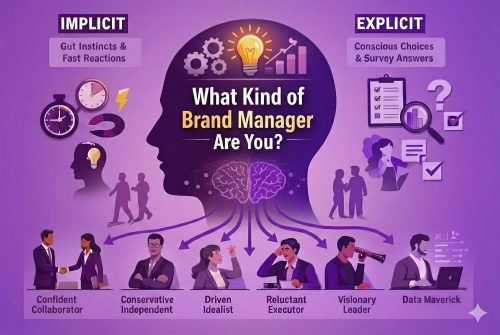How does an implicit reaction time test work?
Clients often ask, ‘How does an implicit reaction time test work?’, so here’s a brief introduction.
The commercial implicit reaction time test is itself based on the evaluative priming paradigm in academic research (e.g., Fazio, et al., 1986)1. The first phase of the test is to detect target emotion words as belonging to either one category (e.g., Happy) or another (e.g., Sad). On each trial in this first phase, the word appears and the respondent has to press one key for happy words and another key for sad words. This is a very easy task, and respondents can do this very quickly with few errors.
In the second phase, the task is the same but the target emotion words are preceded very briefly by ‘primes’. These primes are either congruent with the target word (the prime is Joy when the target is Happy, or the prime is Gloomy when the target is Sad) or incongruent (the prime is Gloomy when the target is Happy, or the prime is Joy when the target is Sad). So on some trials the respondent might see the word Joy flash on the screen followed by Happy. They respond to the second word by pressing a key for happy words. The task can be performed quicker and with fewer errors in this case because the prime and the target are congruent. On other trials, the word Gloomy is flashed on the screen followed by Happy. This time, because Gloomy and Happy are incongruent, respondents are a little slower to detect Happy in their key press. The response may be slower by only a split second, yet when repeated over several trials and over many respondents, it would become ‘statistically significant’.
So let’s take this test into the commercial arena. The primes might be the same (Joy and Gloomy) but this time the targets could be Adidas and Nike. Respondents who have a strong preference for Adidas over Nike are likely to be quicker to respond to Joy > Adidas than Joy > Nike, and quicker to respond to Joy > Adidas than Gloomy > Adidas.
In implicit response testing, we broaden the primes to refelct attributes related to brand equity, such as Trusted, Modern, Friendly, Cool, and so on. The targets can be more than just brands, and can be pack designs, celebrities, claims, and so on.
In fact, there is not only one type of implicit test but several, with each being designed to measure a specific aspect of consumer evaluation, such as ad testing, pack testing, claims testing, NPD testing, celebrity endorsement testing, as well as brand positioning.
So, how does an implicit reaction time test work? In short it is about how quickly the respondent can detect target words and how well brand statements can interfere with the detection times of those words.

Latest Posts
Join Our Newsletter
Subscribe to our email newsletter to keep up to date with our latest insights, news, and findings on market research, implicit testing and our occasional psychological ‘neuro-nuggets’ of wisdom.
Our blog

What Kind of Brand Manager Are You?
If you’re a brand manager, you may plan carefully, but a lot of how you work day to day probably comes down to habit and

When it comes to research, is everyone biased?
Well yes, as a matter of fact, everyone is There’s no shame in it. We’re all biased in some way or another, although understandably we’d

Market Research with Human and Synthetic Respondents
The idea of synthetic respondents in market research arises from a desire to simulate human responses using artificial intelligence. Instead of collecting data from real

